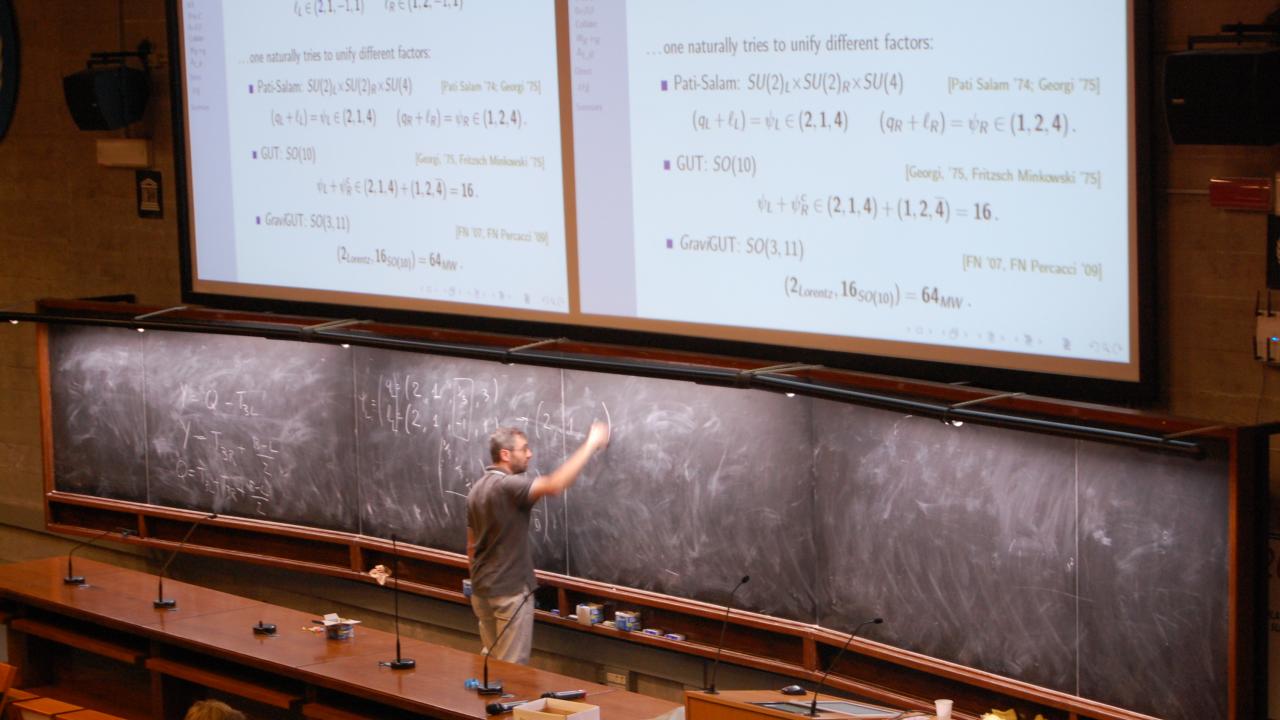
From the quantum aspects of gravity to neutrinos as probes of new physics, from the search for the God particle (Higgs boson) to better understanding Dark Matter, from Grand Unification Theory to physics at the LHC, from supersymmetry to Left-Right symmetry, the participants of the 2011 Summer School on Particle Physics, which ended on June 17, have had plenty to glean.
The summer school has been one of the mainstays of ICTP's High Energy, Cosmology and Astroparticle Physics section, and indeed ICTP, with the first-ever school on particle physics being held in 1981.
"Over three decades the school has evolved a lot," says Goran Senjanovic, senior high-energy physicist at ICTP and one of the school's directors. "This year the aim was to give participants a detailed and up-to-date overview of the fields of particle and astroparticle physics, with an emphasis on the LHC, the long-awaited 'discovery machine' which is hoped to revolutionize the field."
"All the lecturers at this school were outstanding researchers," adds Senjanovic. "Sally Dawson gave an enjoyable course on the Higgs boson, Gia Dvali's exciting course on gravity and its role in particle physics put forth some extremely profound ideas, while William Marciano's lectures on neutrinos gave a synoptic view of the development of neutrino physics from its infancy to cutting edge research and the outlook for the future."
Senjanovic reports thatNeal Weiner gave a fascinating overview of the theory and experimental search for Dark Matter, one of the central mysteries of modern day cosmology. Michael Dine, a leading researcher in supersymmetry gave an update of the field, while Borut Bajc presented a coherent and complete summary of the essentials of grand unification.
"In this era of the LHC, the gripping lectures of Timothy Tait on colliders played an essential role, complemented by Fabrizio Nesti's course on the connection between the origin of the neutrino mass and the LHC, and Cecilia Tarantino's lectures on the intriguing issue of flavour of quarks and leptons" he says.
Senjanovic notes that the lectures by Marciano received rapped attention, particularly due to his real time coverage of the historic release of the T2K collaboration's announcement of its measurement of the phenomenologically crucial third leptonic mixing angle.
The lectures, says Senjanovic, were invariably followed by animated question and answer sessions with the participants displaying a notable enthusiasm and curiosity regarding all aspects of the material covered.
Over the years, schools such as this one have helped students, especially those from developing countries, to hone their craft in physics because they get to learn from and interact with top-level researchers who lecture at the school.
This year, the particle physics school received a record number of applicants (500), and around half of the selected 160 participants were from developing countries. Besides Senjanovic, it was co-organized by Charanjit S. Aulakh (Univ. of Panjab), Stefano Bertolini (SISSA), Miha Nemevsek (ICTP) and Yue Zhang (ICTP), with assistance form Rosanna Sain, the High Energy, Cosmology and Astroparticle section secretary.













